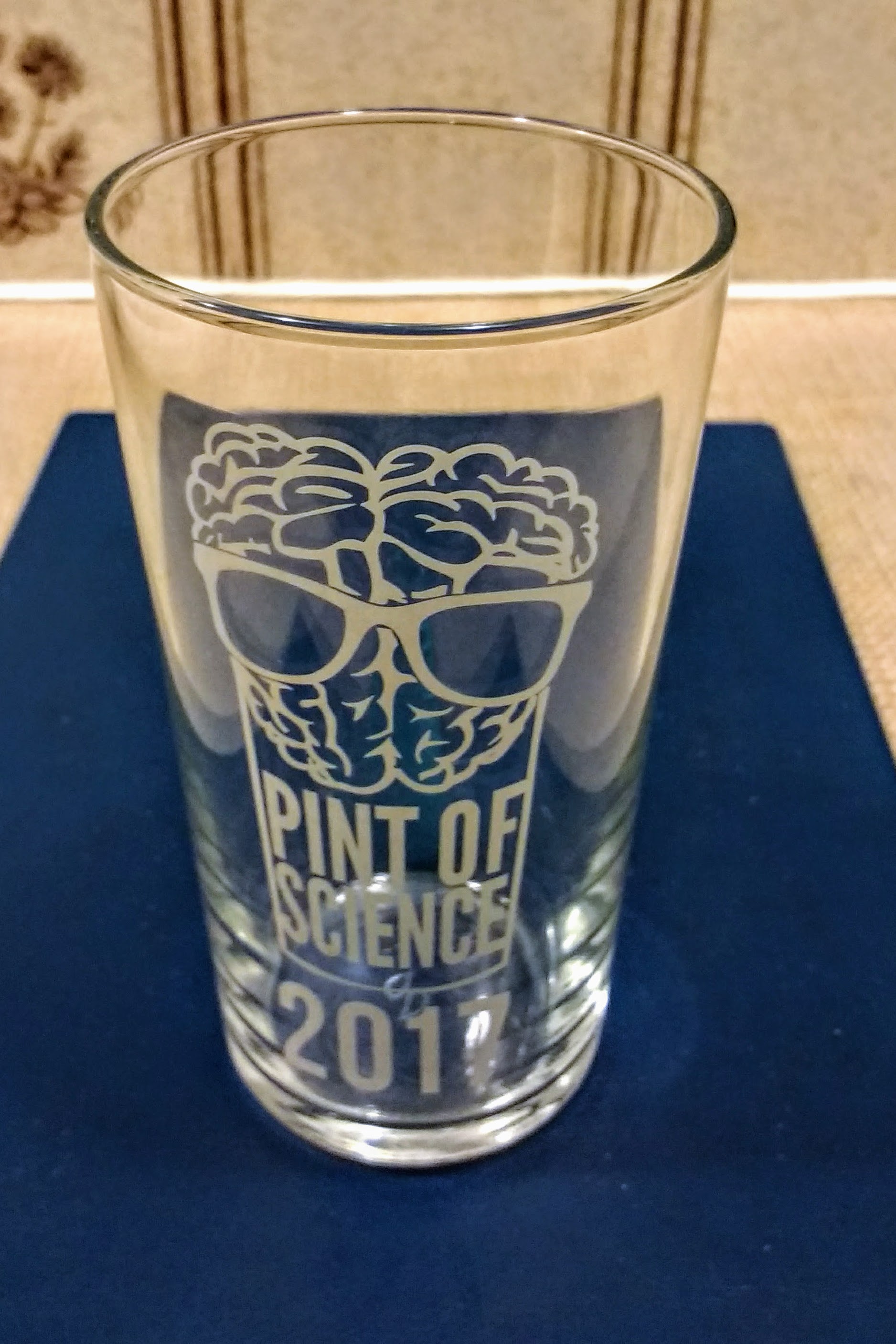May 20, 2017, by Brigitte Nerlich
Science, art and pints
 For the first time in my life I participated in ‘Pint of Science’ this year. This festival of science engagement takes place on three days in May in pubs all around the globe, including 26 cities in the UK, such as Nottingham. Over a drink, scientists present and discuss their latest research and findings and then chat with people. There are also opportunities to participate in quizzes and games.
For the first time in my life I participated in ‘Pint of Science’ this year. This festival of science engagement takes place on three days in May in pubs all around the globe, including 26 cities in the UK, such as Nottingham. Over a drink, scientists present and discuss their latest research and findings and then chat with people. There are also opportunities to participate in quizzes and games.
This year the Pint of Science events covered the following topics:
- Mind – neuroscience, psychology and psychiatry
- Atoms to Galaxies – physics, chemistry, maths, astronomy
- Our Body – medicine, human biology, health
- Planet Earth – geosciences, plant sciences, zoology
- Tech Me Out – biotechnology, robotics, computer
- Our Society – law, history, politics, policy, language
- Creative Reactions – art and science come together
My presentation was part of the ‘Our society’ strand. Here in Nottingham the topic for the evening was ‘The Good, The Bad and The Ethic’.
I talked about the way that scientists and journalists talk about genomics and synthetic biology and I tried to make the point that we should not only think about the ethical implications of the science we do but also about the ethical implications of how we communicate science, indeed frame it. In the social sciences framing refers to a set of concepts and theoretical perspectives on how individuals, group and societies, organise, perceive, and communicate about reality, including science. (We’ll discuss this topic much more in depth at our symposium on Monday, 22 May, 2017)
The other two talks of the evening were really interesting: one, by Neil Sinclair, dealt with ethical expertise and the other, by Matt Vassey, dealt with 3D bioprinting.
Creative Reactions
By chance, I also became part of ‘Creative Reactions’. Creative Reactions is a collaboration between artists and Pint of Science scientists to produce artworks related to the science presented at the pubs. In 2017 Creative Reactions was hosted in Cambridge, London, Bristol, Glasgow, York, and of course, Nottingham.
I was paired up with the local artist Kelly Ann Holmes (whose self-appointed title is ‘leading beer can artist’ – and rightly so). Kelly Ann produced a wonderful artwork entitled “Pandoranomics” which was exhibited at the Nottingham Contemporary together with many other fantastic works of art/science.
Kelly Ann is a self-taught, mixed media artist specialising in the use of aluminium cans. She draws inspiration from pop art and popular cultural alongside her own life experiences.
My talk dealt with the ways in which we make sense of the world in everyday life and in science (through framing, images, metaphors). Kelly Ann managed to make sense of (and frame!) what I tried to say and turned it into art!
Kelly Ann and I met several times over lunch or coffee and discussed how scientific advances, for example in synthetic biology, are represented in the media, but also by scientists themselves. We talked about how such representations can evoke hopes (see: ‘together we can change the world’) or fears and can make promises of near-future breakthroughs or disasters. There is also, quite often, hype (see: the Coca Cola frame).
We also chatted about the way metaphors, images and clichés are used in this process of sense-making. When people discuss advances in biotechnology they often talk about Brave New World for example or Opening Pandora’s Box – sometimes forgetting to mention that at the bottom of the mythological box lies ‘hope’. However, as Kelly Ann tried to show in her artwork, hope can be sold in various ways to the public; there can also be false hope of magic cures for example. That’s why, around the word ‘HOPE’, she pasted the words: ‘The urge to cure is a false front for the urge to rule’.
As my talk was about ‘framing’, Kelly Ann tried to represent this in her artwork and managed to salvage an old TV ‘frame’. That was great. But it turned out that the TV set was very very heavy. So it took quite a lot of work to hollow it out, cut in in half and use it. And still, the end-result was too heavy to hang on a wall. So the artwork was put on a table. (My photo above doesn’t quite do justice to the 3D-ness of it all)
Lots of people were interested in this piece of art, but one person in particular fell in love with it. This was Paul Fodor, one of the organisers of Pint of Science and a PhD student doing cancer research here at the University of Nottingham. At the end of the evening Kelly Ann gave him ‘Pandoranomics’, and we hope that he was able to carry it home safely. We are both pleased it has found a good home!!
I thoroughly enjoyed both the Pint of Science evening and the Creative Reactions experience and exhibition and I’d like to thank all the PhD students here at the University of Nottingham, especially Elizabeth Radley, Veronika Metzler, Francesco Tarantini and Matharu Gurdip who made Pint of Science and Creative Reactions happen. They are great!!! Thanks also for the support from the Pint of Science organisation and to all those who donated money to Creative Reactions and enabled me to meet Kelly Ann.
No comments yet, fill out a comment to be the first


Leave a Reply